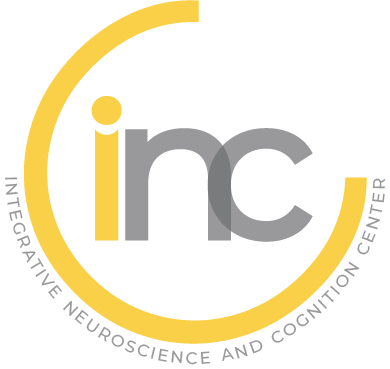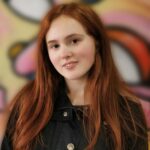THE SPATIAL BRAIN
The Spatial Brain research group is composed of researchers and clinicians. The group focuses its activities on the unimodal or multimodal processing of neural signals for the representation of spatial information throughout the brain, from the brainstem to cortical areas, in a multi-layered integrative approach conducted on both animals and humans. The overreaching goal is to understand how the brain combines sensory and motor information to generate internal representations of the position and movement of the body in a given environment. We broaden this fundamental research themes to understand how the spatial brain adapts to long term environmental (e.g. space) or pathological (diseases) perturbations.
Research topics
- THEME 1: internal representation of body and space
- Somatotopy and body representation.
We use behavioral and EEG (somatosensory evoked potentials) methods to study how touch and body representations are coded and to identify their common and distinct characteristics. - Internal models for 3D space perception.
We use experimental paradigms exploiting virtual reality and haptic technologies, coupled to EEG, to measure and manipulate the perception of 3D objects. These experiments are sponsored by the French space agency (CNES). - Vestibular pathways for spatial orientation and perception.
We are developing in vitro labelling techniques combined with electrophysiology recordings to decipher in different genetically engineered mouse strains the specific subcircuits that relates these different structures together. These experiments, part of the INVEST ANR PROJECT (2021-2026) are conducted in collaboration with F. Sargolini (CNRS-Univ. Aix-Marseille).
- Somatotopy and body representation.
- THEME 2: Sensory and motor modulation for spatial coding
- Modulation of vestibular signals by spinal locomotor efferent copy signals.
These experiments, part of the LOCOGATE ANR PROJECT (2023-2027) are conducted in collaboration with F. Lambert (CNRS-Univ. Bordeaux). - Shaping of spatial representation through exploratory movements.
To investigate how movement shapes the spatial representation of touch and how touch and movement are reciprocally related, we use behavioural methods decorrelating movement from its sensory consequences. - The role of gravity in spatial perception visuo-manual coordination.
In collaboration with the European and French space agencies we devote experimental paradigm in weightlessness (on board of parabolic flights or of the International Space Station) to investigate the role of gravitational inputs on our ability of compare visual and proprioceptive/haptic information and to combine them to improve perceptive and motor performances.
- Modulation of vestibular signals by spinal locomotor efferent copy signals.
- THEME 3: Diseases affecting the Spatial Brain
Our group has developed collaborations with different research centers (Institut Psychiatrie & Neurosciences Paris; Institut de l’Audition; Centre de Recherche en Audiologie) and hospitals (Necker – Enfants Malades & Saint-Anne Psychiatric hospitals) that let us develop research lines aimed at understanding how different neural disease affect the Spatial brain.- Tactile and body spatial representations in psychiatric disorders
We aim to characterize the distortions of body and tactile representation along the different stages of the pathology anoxia nervosa, and are investigating the hypothesis that somatosensory integration, as a driver of spatial attention, is altered in psychosis and leads to an inappropriate motor response compared to the context. We use behavioural technics and EEG to quantify spatial somatosensory integration in schizophrenia. - Effects of vestibular deficits on visuo-manual coordination
Our experimental and theoretical studies about the importance of gravitational/otolithic signals on goal-oriented hand movements suggest that inner ear pathologies might have an effect also on this poorly evaluated patients’ functions. To explore this hypothesis, we develop tests adapted to young age patients. Through a research collaboration, we quantify at Necker’s hospital the effect of different vestibular deficits (congenital vs acquired, bilateral vs unilateral…) on the patients visuo-manual functions. - Animal models of vestibular pathologies
Work on vestibular pathologies is developed at national level with the groups of Christian Chabbert (Marseille), Saaid Safieddine (Pasteur/hearing institute) and Aziz El Amraoui (Pasteur/hearing institute), and at the international level with Prof. Jordi Lorens (Univ. Barcelona), and Prof. Kenna Peusner (GW University). Our group is coordinating the Parisian Centre de compétence Paris Vestibulaire, of Université Paris Cité with the aim to favor fundamental & clinical research.
- Tactile and body spatial representations in psychiatric disorders
TEAM MEMBERS
Team leader
Permanent researchers
Visiting scientists
︾ PUBLICATIONS ︾
Journal articles
2025
- ref_biblio
- Anaëlle Alouit, Martine Gavaret, Céline Ramdani, Påvel G Lindberg, Lucile Dupin. Cortical activations induced by electrical versus vibrotactile finger stimulation using EEG. NeuroImage, 2025, 314, pp.121249. ⟨10.1016/j.neuroimage.2025.121249⟩. ⟨hal-05095115⟩
- Accès au texte intégral et bibtex
-


- ref_biblio
- David Dubayle, Jean-Luc Morel, Sighild Lemarchant. Blood-spinal cord barrier alterations in a mouse model of centrifugation-induced hypergravity. Frontiers in Physiology, 2025, 16, ⟨10.3389/fphys.2025.1658389⟩. ⟨hal-05236201⟩
- Accès au texte intégral et bibtex
-


- ref_biblio
- Solène Moreau, Raul Flores-Berdines, Tatiana El Jalkh, Anne Simon, Guillaume Taret, et al.. Reversible and reusable compartmentalized thermoplastic chip for coculture of dorsal root ganglion neurons. Lab on a Chip, 2025, Online ahead of print. ⟨10.1039/D5LC00666J⟩. ⟨hal-05360835⟩
- Accès au texte intégral et bibtex
-


- ref_biblio
- Laurent Opsomer, Simon Vandergooten, Michele Tagliabue, Jean-Louis Thonnard, Philippe Lefèvre, et al.. A singular theory of sensorimotor coordination: On targeted motions in space.. Journal of Neuroscience, 2025, pp.e1384242024. ⟨10.1523/JNEUROSCI.1384-24.2024⟩. ⟨hal-04952106⟩
- Accès au bibtex
-

- ref_biblio
- Laurent Opsomer, Simon Vandergooten, Michele Tagliabue, Jean-Louis Thonnard, Philippe Lefèvre, et al.. A singular theory of sensorimotor coordination: On targeted motions in space.. Journal of Neuroscience, 2025, ⟨10.1523/jneurosci.1384-24.2024⟩. ⟨hal-04952392⟩
- Accès au texte intégral et bibtex
-


2024
- ref_biblio
- Anaëlle Alouit, Martine Gavaret, Céline Ramdani, Påvel Lindberg, Lucile Dupin. Cortical activations associated with spatial remapping of finger touch using EEG. Cerebral Cortex, 2024, 34 (4), ⟨10.1093/cercor/bhae161⟩. ⟨hal-04795597⟩
- Accès au texte intégral et bibtex
-


- ref_biblio
- Lucile Dupin, Eloïse Gerardin, Maxime Térémetz, Sonia Hamdoun, Guillaume Turc, et al.. Alterations of tactile and anatomical spatial representations of the hand after stroke. Cortex, 2024, 177, pp.68-83. ⟨10.1016/j.cortex.2024.04.015⟩. ⟨hal-04801676⟩
- Accès au texte intégral et bibtex
-


- ref_biblio
- Ghizlene Lahlou, Charlotte Calvet, François Simon, Vincent Michel, Lauranne Alciato, et al.. Extended time frame for restoring inner ear function through gene therapy in Usher1G preclinical model. JCI Insight, 2024, 9 (3), pp.e169504. ⟨10.1172/jci.insight.169504⟩. ⟨hal-04471800⟩
- Accès au texte intégral et bibtex
-


- ref_biblio
- Solène Moreau, Raul Flores-Berdines, Tatiana El Jalkh, Anne Simon, Guillaume Taret, et al.. Reversible and reusable compartmentalized microfluidic chip for coculture of dorsal root ganglion neurons. Bioarxiv, 2024, ⟨10.1101/2024.12.10.627139⟩. ⟨hal-04987043⟩
- Accès au bibtex
-

- ref_biblio
- Theo Morfoisse, Gabriela Herrera Altamira, Leonardo Angelini, Gilles Clément, Mathieu Beraneck, et al.. Modality-independent effect of gravity in shaping the internal representation of 3D space for visual and haptic object perception. Journal of Neuroscience, 2024, pp.e2457202023. ⟨10.1523/JNEUROSCI.2457-20.2023⟩. ⟨hal-04515112⟩
- Accès au texte intégral et bibtex
-


- ref_biblio
- Coralie van Ravestyn, Eloïse Gerardin, Maxime Térémetz, Sonia Hamdoun, Jean-Claude Baron, et al.. Post-Stroke Impairments of Manual Dexterity and Finger Proprioception: Their Contribution to Upper Limb Activity Capacity. Neurorehabilitation and Neural Repair, 2024, 38 (5), pp.373-385. ⟨10.1177/15459683241245416⟩. ⟨hal-04795375⟩
- Accès au texte intégral et bibtex
-


2023
- ref_biblio
- Mathieu Beraneck, Karen L Elliott, Joel C Glover, Hans Straka. Editorial: Development of the vestibular system. Frontiers in Neurology, 2023, 14, pp.1191086. ⟨10.3389/fneur.2023.1191086⟩. ⟨hal-04292287⟩
- Accès au texte intégral et bibtex
-


- ref_biblio
- David Dubayle, Arnaud Vanden-Bossche, Tom Peixoto, Jean Luc Morel. Hypergravity Increases Blood–Brain Barrier Permeability to Fluorescent Dextran and Antisense Oligonucleotide in Mice. Cells, 2023, 12 (5), ⟨10.3390/cells12050734⟩. ⟨hal-04086641v2⟩
- Accès au texte intégral et bibtex
-


- ref_biblio
- François Lambert, Mathieu Beraneck, Hans Straka, John Simmers. Locomotor efference copy signaling and gaze control: an evolutionary perspective. Current Opinion in Neurobiology, 2023, 82, pp.102761. ⟨10.1016/j.conb.2023.102761⟩. ⟨hal-04292398⟩
- Accès au texte intégral et bibtex
-


- ref_biblio
- Valeria Lucarini, Anaëlle Alouit, Delphine Yeh, Jeanne Le Coq, Romane Savatte, et al.. Neurophysiological explorations across the spectrum of psychosis, autism, and depression, during wakefulness and sleep: protocol of a prospective case–control transdiagnostic multimodal study (DEMETER). BMC Psychiatry, 2023, 23 (1), pp.860. ⟨10.1186/s12888-023-05347-x⟩. ⟨hal-04314404⟩
- Accès au texte intégral et bibtex
-


- ref_biblio
- Louise Schenberg, Aïda Palou, François Simon, Tess Bonnard, Charles-Elliot Barton, et al.. Multisensory gaze stabilization in response to subchronic alteration of vestibular type I hair cells. eLife, 2023, 12, ⟨10.7554/eLife.88819.3⟩. ⟨hal-04952620⟩
- Accès au bibtex
-

- ref_biblio
- Louise Schenberg, Aïda Palou, François Simon, Tess Bonnard, Charles-Elliot Barton, et al.. Subchronic alteration of vestibular hair cells in mice: implications for multisensory gaze stabilization. eLife, In press, ⟨10.7554/elife.88819.2⟩. ⟨hal-04292263⟩
- Accès au texte intégral et bibtex
-


2022
- ref_biblio
- Julien Bacqué-Cazenave, Gilles Courtand, Mathieu Beraneck, Hans Straka, Denis Combes, et al.. Locomotion-induced ocular motor behavior in larval Xenopus is developmentally tuned by visuo-vestibular reflexes. Nature Communications, 2022, 13 (1), pp.2957. ⟨10.1038/s41467-022-30636-6⟩. ⟨hal-03690632⟩
- Accès au texte intégral et bibtex
-


- ref_biblio
- Jules Bernard-Espina, Daniele Dal Canto, Mathieu Beraneck, Joseph Mcintyre, Michele Tagliabue. How Tilting the Head Interferes With Eye-Hand Coordination: The Role of Gravity in Visuo-Proprioceptive, Cross-Modal Sensory Transformations. Frontiers in Integrative Neuroscience, 2022, 16, pp.788905. ⟨10.3389/fnint.2022.788905⟩. ⟨hal-03674506⟩
- Accès au texte intégral et bibtex
-


- ref_biblio
- Jules Bernard-Espina, Daniele Dal Canto, Mathieu Beraneck, Joseph McIntyre, Michele Tagliabue. How Tilting the Head Interferes With Eye-Hand Coordination: The Role of Gravity in Visuo-Proprioceptive, Cross-Modal Sensory Transformations. Frontiers in Integrative Neuroscience, 2022, 16, ⟨10.3389/fnint.2022.788905⟩. ⟨hal-04952633⟩
- Accès au bibtex
-

- ref_biblio
- Antonio Cataldo, Lucile Dupin, Harriet Dempsey-Jones, Hiroaki Gomi, Patrick Haggard. Interplay of tactile and motor information in constructing spatial self-perception. Current Biology, 2022, Online ahead of print. ⟨10.1016/j.cub.2022.01.047⟩. ⟨inserm-03578120⟩
- Accès au texte intégral et bibtex
-


- ref_biblio
- Lucile Dupin, Macarena Cuenca, Jean-Claude Baron, Marc A Maier, Påvel G Lindberg. Shrinking of spatial hand representation but not of objects across the lifespan. Cortex, 2022, 146 (1988), pp.173-185. ⟨10.1016/j.cortex.2021.10.009⟩. ⟨hal-04260171⟩
- Accès au texte intégral et bibtex
-


- ref_biblio
- Jack Foucher, Ludovic Jeanjean, Clément C. de Billy, Bruno Pfuhlmann, Julie M.E. Clauss, et al.. The polysemous concepts of psychomotricity and catatonia: A European multi-consensus perspective. European Neuropsychopharmacology, 2022, 56, ⟨10.1016/j.euroneuro.2021.11.008⟩. ⟨hal-03797675⟩
- Accès au texte intégral et bibtex
-


- ref_biblio
- Filipa França de Barros, Julien Bacqué-Cazenave, Coralie Taillebuis, Gilles Courtand, Marin Manuel, et al.. Conservation of locomotion-induced oculomotor activity through evolution in mammals. Current Biology, 2022, 32 (2), pp.453-461.e4. ⟨10.1016/j.cub.2021.11.022⟩. ⟨hal-04952649⟩
- Accès au bibtex
-

- ref_biblio
- Filipa França de Barros, Julien Bacqué-Cazenave, Coralie Taillebuis, Gilles Courtand, Marin Manuel, et al.. Conservation of locomotion-induced oculomotor activity through evolution in mammals. Current Biology, 2022, 32, pp.453 - 461.e4. ⟨10.1016/j.cub.2021.11.022⟩. ⟨hal-03764860⟩
- Accès au texte intégral et bibtex
-


- ref_biblio
- Max Piffoux, Amanda Silva, Florence Gazeau, Hugo Salmon. Potential of on‐chip analysis and engineering techniques for extracellular vesicle bioproduction for therapeutics. Re View, 2022, 3 (1), pp.20200175. ⟨10.1002/VIW.20200175⟩. ⟨hal-03868884⟩
- Accès au bibtex
-

- ref_biblio
- Ayah Rabah, Quentin Le Boterff, Loïc Carment, Narjes Bendjemaa, Maxime Térémetz, et al.. A novel tablet-based application for assessment of manual dexterity and its components: a reliability and validity study in healthy subjects. Journal of NeuroEngineering and Rehabilitation, 2022, 19 (1), pp.35. ⟨10.1186/s12984-022-01011-9⟩. ⟨inserm-03624404⟩
- Accès au texte intégral et bibtex
-


- ref_biblio
- François Simon, Kenna Peusner, Richard Lewis, Mathieu Beraneck. Editorial: New Approaches to Investigate Congenital Vestibular Disorders. Frontiers in Neurology, 2022, 13, pp.921007. ⟨10.3389/fneur.2022.921007⟩. ⟨hal-03764754⟩
- Accès au texte intégral et bibtex
-


2021
- ref_biblio
- Jules Bernard-Espina, Mathieu Beraneck, Marc Maier, Michele Tagliabue. Multisensory Integration in Stroke Patients: A Theoretical Approach to Reinterpret Upper-Limb Proprioceptive Deficits and Visual Compensation. Frontiers in Neuroscience, 2021, 15, ⟨10.3389/fnins.2021.646698⟩. ⟨hal-04952662⟩
- Accès au bibtex
-

- ref_biblio
- Jules Bernard-Espina, Mathieu Beraneck, Marc Maier, Michele Tagliabue. Multisensory Integration in Stroke Patients: A Theoretical Approach to Reinterpret Upper-Limb Proprioceptive Deficits and Visual Compensation. Frontiers in Neuroscience, 2021, 15, ⟨10.3389/fnins.2021.646698⟩. ⟨hal-03383183⟩
- Accès au texte intégral et bibtex
-


- ref_biblio
- Antonio Cataldo, Lucile Dupin, Hiroaki Gomi, Patrick Haggard. Sensorimotor signals underlying space perception: An investigation based on self-touch. Neuropsychologia, 2021, 151, pp.107729. ⟨10.1016/j.neuropsychologia.2020.107729⟩. ⟨hal-04526486⟩
- Accès au texte intégral et bibtex
-


- ref_biblio
- Anne Héron, V. Papillon, D. Dubayle. Medical, neurobiological, and psychobehavioral perspectives of mastocytosis: a case report. Journal of Medical Case Reports, 2021, 15 (1), pp.176. ⟨10.1186/s13256-021-02757-x⟩. ⟨hal-03988335⟩
- Accès au texte intégral et bibtex
-


- ref_biblio
- Kenna D Peusner, Nina M Bell, June C Hirsch, Mathieu Beraneck, Anastas Popratiloff. Understanding the Pathophysiology of Congenital Vestibular Disorders: Current Challenges and Future Directions. Frontiers in Neurology, 2021, 12, ⟨10.3389/fneur.2021.708395⟩. ⟨hal-03383235⟩
- Accès au texte intégral et bibtex
-


- ref_biblio
- Hugo Salmon, M. Reza Rasouli, Nicholas Distasio, Maryam Tabrizian. Facile engineering and interfacing of styrenic block copolymers devices for low‐cost, multipurpose microfluidic applications. Engineering Reports, 2021, 3 (7), pp.479. ⟨10.1002/eng2.12361⟩. ⟨hal-04987048⟩
- Accès au bibtex
-

- ref_biblio
- François Simon, Françoise Denoyelle, Mathieu Beraneck. Interpreting pendred syndrome as a foetal hydrops: Clinical and animal model evidence. Journal of Vestibular Research, 2021, 31 (4), pp.315-321. ⟨10.3233/ves-200789⟩. ⟨hal-03383212⟩
- Accès au texte intégral et bibtex
-


- ref_biblio
- François Simon, Fadel Tissir, Vincent Michel, Ghizlene Lahlou, Michael Deans, et al.. Implication of Vestibular Hair Cell Loss of Planar Polarity for the Canal and Otolith-Dependent Vestibulo-Ocular Reflexes in Celsr1–/– Mice. Frontiers in Neuroscience, 2021, 15, pp.750596. ⟨10.3389/fnins.2021.750596⟩. ⟨hal-03451916⟩
- Accès au texte intégral et bibtex
-


- ref_biblio
- J. Verbe, P. Lindberg, P. Gorwood, Lucile Dupin, P. Duriez. Spatial hand representation in anorexia nervosa: a controlled pilot study. Scientific Reports, 2021, 11 (1), pp.19724. ⟨10.1038/s41598-021-99101-6⟩. ⟨hal-04526515⟩
- Accès au texte intégral et bibtex
-


2020
- ref_biblio
- Loïc Carment, Elie Khoury, Lucile Dupin, Laura Guedj, Narjes Bendjemaa, et al.. Common vs. Distinct Visuomotor Control Deficits in Autism Spectrum Disorder and Schizophrenia. Autism Research, 2020, Epub ahead of print. ⟨10.1002/aur.2287⟩. ⟨inserm-02506633⟩
- Accès au texte intégral et bibtex
-


- ref_biblio
- Nicholas Distasio, Hugo Salmon, France Dierick, Talin Ebrahimian, Maryam Tabrizian, et al.. VCAM‐1‐Targeted Gene Delivery Nanoparticles Localize to Inflamed Endothelial Cells and Atherosclerotic Plaques. Advanced Therapeutics, 2020, 4 (2), ⟨10.1002/adtp.202000196⟩. ⟨hal-04987052⟩
- Accès au bibtex
-

- ref_biblio
- David Dubayle, Arnaud Vanden-Bossche, Mathieu Beraneck, Laurence Vico, Jean-Luc Morel. Effects of centrifugation and whole-body vibrations on blood–brain barrier permeability in mice. NPJ Microgravity, 2020, 6 (1), ⟨10.1038/s41526-019-0094-z⟩. ⟨hal-03006942⟩
- Accès au texte intégral et bibtex
-


- ref_biblio
- Filipa Franca de Barros, Louise Schenberg, Michele Tagliabue, Mathieu Beraneck. Long term visuo-vestibular mismatch in freely behaving mice differentially affects gaze stabilizing reflexes. Scientific Reports, 2020, 10 (1), ⟨10.1038/s41598-020-77026-w⟩. ⟨hal-03016063⟩
- Accès au texte intégral et bibtex
-


- ref_biblio
- Filipa França de Barros, Louise Schenberg, Michele Tagliabue, Mathieu Beraneck. Long term visuo-vestibular mismatch in freely behaving mice differentially affects gaze stabilizing reflexes. Scientific Reports, 2020, 10 (1), pp.20018. ⟨10.1038/s41598-020-77026-w⟩. ⟨hal-04952695⟩
- Accès au bibtex
-

- ref_biblio
- Desdemona Fricker, Mathieu Beraneck, Michele Tagliabue, Kate J Jeffery. Editorial: Coding for Spatial Orientation in Humans and Animals: Behavior, Circuits and Neurons. Frontiers in Neural Circuits, 2020, 14, ⟨10.3389/fncir.2020.619073⟩. ⟨hal-03454359⟩
- Accès au texte intégral et bibtex
-


- ref_biblio
- François Lambert, Julien Bacqué-Cazenave, Anne Le Seach, Jessica Arama, Gilles Courtand, et al.. Stabilization of Gaze during Early Xenopus Development by Swimming-Related Utricular Signals. Current Biology, 2020, 30 (4), pp.746-753.e4. ⟨10.1016/j.cub.2019.12.047⟩. ⟨hal-03063794⟩
- Accès au bibtex
-

- ref_biblio
- François Simon, David Pericat, Cassandre Djian, Desdemona Fricker, Francoise Denoyelle, et al.. Surgical techniques and functional evaluation for vestibular lesions in the mouse: unilateral labyrinthectomy (UL) and unilateral vestibular neurectomy (UVN). Journal of Neurology, 2020, 1, ⟨10.1007/s00415-020-09960-8⟩. ⟨hal-03016052⟩
- Accès au texte intégral et bibtex
-


- ref_biblio
- Maxime Térémetz, Loïc Carment, Lucile Dupin, Laura Guedj, Maxime Térémetz, et al.. Neural noise and cortical inhibition in schizophrenia. Brain Stimulation, 2020, 13 (5), pp.1298-1304. ⟨10.1016/j.brs.2020.06.015⟩. ⟨inserm-02883826⟩
- Accès au texte intégral et bibtex
-


- ref_biblio
- Sebastian Walther, Peter van Harten, John Waddington, Manuel Cuesta, Victor Peralta, et al.. Movement disorder and sensorimotor abnormalities in schizophrenia and other psychoses - European consensus on assessment and perspectives. European Neuropsychopharmacology, 2020, 38, pp.25-39. ⟨10.1016/j.euroneuro.2020.07.003⟩. ⟨hal-04526483⟩
- Accès au bibtex
-

2019
- ref_biblio
- Loïc Carment, Lucile Dupin, Laura Guedj, Maxime Térémetz, Marie-Odile Krebs, et al.. Impaired attentional modulation of sensorimotor control and cortical excitability in schizophrenia. Brain - A Journal of Neurology , 2019, 142 (7), pp.2149-2164. ⟨10.1093/brain/awz127⟩. ⟨hal-04526743⟩
- Accès au texte intégral et bibtex
-


- ref_biblio
- Raphaelle Cassel, Pierrick Bordiga, Julie Carcaud, François Simon, Mathieu Beraneck, et al.. Morphological and functional correlates of vestibular synaptic deafferentation and repair in a mouse model of acute-onset vertigo. Disease Models & Mechanisms, 2019, 12 (7), pp.dmm039115. ⟨10.1242/dmm.039115⟩. ⟨hal-02352249⟩
- Accès au texte intégral et bibtex
-


- ref_biblio
- Lucile Dupin, Loïc Carment, Laura Guedj, Marie-Odile Krebs, Marc Maier, et al.. Predictive Modulation of Corticospinal Excitability and Implicit Encoding of Movement Probability in Schizophrenia. Schizophrenia Bulletin, 2019, 45 (6), pp.1358-1366. ⟨10.1093/schbul/sby186⟩. ⟨hal-04526736⟩
- Accès au bibtex
-

- ref_biblio
- Lucile Dupin, Patrick Haggard. Dynamic Displacement Vector Interacts with Tactile Localization. Current Biology, 2019, 29 (3), pp.492-498.e3. ⟨10.1016/j.cub.2018.12.032⟩. ⟨hal-04526489⟩
- Accès au bibtex
-

- ref_biblio
- Filipa Franca de Barros, Julie Carcaud, Mathieu Beraneck. Long-term Sensory Conflict in Freely Behaving Mice. Journal of visualized experiments : JoVE, 2019, 144, ⟨10.3791/59135⟩. ⟨hal-02110753⟩
- Accès au texte intégral et bibtex
-


- ref_biblio
- Anne Héron, Christophe Leroux, David Dubayle. Le placebo à l’hôpital. Médecine/Sciences, 2019, 35 (8-9), pp.674-681. ⟨10.1051/medsci/2019127⟩. ⟨hal-02292978⟩
- Accès au texte intégral et bibtex
-


- ref_biblio
- François Lambert, Julien Bacqué-Cazenave, Anne Le Seach, Jessica Arama, Gilles Courtand, et al.. Stabilization of Gaze during Early Xenopus Development by Swimming-Related Utricular Signals.. Current Biology, 2019, ⟨10.1016/j.cub.2019.12.047⟩. ⟨hal-02413450⟩
- Accès au texte intégral et bibtex
-


- ref_biblio
- Louis Richevaux, Louise Schenberg, Mathieu Beraneck, Desdemona Fricker. In Vivo Intracerebral Stereotaxic Injections for Optogenetic Stimulation of Long-Range Inputs in Mouse Brain Slices. Journal of visualized experiments : JoVE, 2019, 151, ⟨10.3791/59534⟩. ⟨hal-02353982⟩
- Accès au texte intégral et bibtex
-


- ref_biblio
- Hugo Salmon, Rabah Gahoual, Pascal Houzé, Tayssir Ibrahim, Michel Bessodes, et al.. Europium labeled lactosylated albumin as a model workflow for the development of biotherapeutics. Nanomedicine: Nanotechnology, Biology and Medicine, 2019, 18, pp.21-30. ⟨10.1016/j.nano.2019.02.011⟩. ⟨hal-02123126⟩
- Accès au texte intégral et bibtex
-


- ref_biblio
- Hugo Salmon, Christophe Roblin, Laurent Couraud, Gilgueng Hwang. Microrobot-in-glass for dynamic motion analysis and wider in vitro applications. Micro and Nano Letters, 2019, ⟨10.1049/mnl.2019.0006⟩. ⟨hal-02087207⟩
- Accès au bibtex
-

- ref_biblio
- Hugo Salmon, Laurent Couraud, Gilgueng Hwang. On-chip mobile microrobotic transducer for high-temporal resolution sensing using dynamics analysis. Sensors and Actuators A: Physical , 2019, 288, pp.27-38. ⟨10.1016/j.sna.2018.12.043⟩. ⟨hal-02087217⟩
- Accès au texte intégral et bibtex
-


2018
- ref_biblio
- Julien Bacqué-Cazenave, Gilles Courtand, Mathieu Beraneck, François Lambert, Denis Combes. Temporal Relationship of Ocular and Tail Segmental Movements Underlying Locomotor-Induced Gaze Stabilization During Undulatory Swimming in Larval Xenopus. Frontiers in Neural Circuits, 2018, 12, ⟨10.3389/fncir.2018.00095⟩. ⟨hal-02110838⟩
- Accès au texte intégral et bibtex
-


- ref_biblio
- Lucile Dupin, Vincent Hayward, Mark Wexler. Radial trunk-centred reference frame in haptic perception. Scientific Reports, 2018, 8 (1), pp.13550. ⟨hal-04026806⟩
- Accès au bibtex
-

- ref_biblio
- Guillaume Harlé, Sandra Kaminski, David Dubayle, Jean-Pol Frippiat, Armelle Ropars. Murine splenic B cells express corticotropin-releasing hormone receptor 2 that affect their viability during a stress response. Scientific Reports, 2018, 8 (1), pp.143. ⟨10.1038/s41598-017-18401-y⟩. ⟨hal-04734856⟩
- Accès au texte intégral et bibtex
-


- ref_biblio
- Erwin Idoux, Michele Tagliabue, Mathieu Beraneck. No Gain No Pain: Relations Between Vestibulo-Ocular Reflexes and Motion Sickness in Mice. Frontiers in Neurology, 2018, 9, ⟨10.3389/fneur.2018.00918⟩. ⟨hal-02110820⟩
- Accès au texte intégral et bibtex
-


- ref_biblio
- Erwin Idoux, Michele Tagliabue, Mathieu Beraneck. No Gain No Pain: Relations Between Vestibulo-Ocular Reflexes and Motion Sickness in Mice. Frontiers in Neurology, 2018, 9 (4), pp.746-753.e4. ⟨10.3389/fneur.2018.00918⟩. ⟨hal-04952710⟩
- Accès au bibtex
-

- ref_biblio
- Julie Lachaux, Hugo Salmon, Fanny Loisel, Nassim Arouche, Ignacio Ochoa, et al.. Soft Thermoplastic Elastomer for Easy and Rapid Spin‐Coating Fabrication of Microfluidic Devices with High Hydrophilization and Bonding Performances. Advanced Materials Technologies, 2018, 4 (2), ⟨10.1002/admt.201800308⟩. ⟨hal-04526639⟩
- Accès au bibtex
-

- ref_biblio
- Lisa Lambert, David Dubayle, Assia Fafouri, Etienne Herzog, Zsolt Csaba, et al.. Endocytosis of Activated Muscarinic m2 Receptor (m2R) in Live Mouse Hippocampal Neurons Occurs via a Clathrin-Dependent Pathway. Frontiers in Cellular Neuroscience, 2018, 12, pp.450. ⟨10.3389/fncel.2018.00450⟩. ⟨hal-01977271⟩
- Accès au texte intégral et bibtex
-


- ref_biblio
- Mérie Nassar, Jean Simonnet, Li-Wen Huang, Bertrand Mathon, Ivan Cohen, et al.. Anterior Thalamic Excitation and Feedforward Inhibition of Presubicular Neurons Projecting to Medial Entorhinal Cortex. Journal of Neuroscience, 2018, 38 (28), pp.6411-6425. ⟨10.1523/JNEUROSCI.0014-18.2018⟩. ⟨hal-02110910⟩
- Accès au texte intégral et bibtex
-


- ref_biblio
- Ghjuvan Ghjacumu Shackleford, Nirmal Kumar Sampathkumar, Mehdi Hichor, Laure Weill, Delphine Meffre, et al.. The Involvement of Aryl hydrocarbon receptor in myelination and in human nerve sheath tumorigenesis. Proceedings of the National Academy of Sciences of the United States of America, 2018, 115 (6), pp.E1319-E1328. ⟨10.1073/pnas.1715999115⟩. ⟨hal-02110942⟩
- Accès au texte intégral et bibtex
-


2017
- ref_biblio
- Issam Al Amir, David Dubayle, Anne Héron, Carine Delayre-Orthez, Pauline M. Anton. Maillard Reaction Products from highly heated food prevent mast cell number increase and inflammation in a mouse model of colitis. Nutrition Research, 2017, 46, pp.26-32. ⟨10.1016/j.nutres.2017.10.005⟩. ⟨hal-01625889⟩
- Accès au texte intégral et bibtex
-


- ref_biblio
- Léo Arnoux, Sebastien Fromentin, Dario Farotto, Mathieu Beraneck, Joseph Mcintyre, et al.. The visual encoding of purely proprioceptive intermanual tasks is due to the need of transforming joint signals, not to their interhemispheric transfer. Journal of Neurophysiology, 2017, 118 (3), pp.1598-1608. ⟨10.1152/jn.00140.2017⟩. ⟨hal-02111090⟩
- Accès au texte intégral et bibtex
-


- ref_biblio
- Léo Arnoux, Sebastien Fromentin, Dario Farotto, Mathieu Beraneck, Joseph McIntyre, et al.. The visual encoding of purely proprioceptive intermanual tasks is due to the need of transforming joint signals, not to their interhemispheric transfer. Journal of Neurophysiology, 2017, 118 (3), pp.1598-1608. ⟨10.1152/jn.00140.2017⟩. ⟨hal-04952721⟩
- Accès au bibtex
-

- ref_biblio
- Julie Carcaud, Filipa França de Barros, Erwin Idoux, Daniel Eugene, Lionel Reveret, et al.. Long-Lasting Visuo-Vestibular Mismatch in Freely-Behaving Mice Reduces the Vestibulo-Ocular Reflex and Leads to Neural Changes in the Direct Vestibular Pathway. eNeuro, 2017, 4 (1), pp.1-17. ⟨10.1523/ENEURO.0290-16.2017⟩. ⟨hal-01668177⟩
- Accès au texte intégral et bibtex
-


- ref_biblio
- Lucile Dupin, Vincent Hayward, Mark Wexler. Generalized movement representation in haptic perception.. Journal of Experimental Psychology. Human Perception and Performance, 2017, 43 (3), pp.581-595. ⟨10.1037/xhp0000327⟩. ⟨hal-04526507⟩
- Accès au texte intégral et bibtex
-


- ref_biblio
- Alice Emptoz, Vincent Michel, Andrea Lelli, Omar Akil, Jacques Boutet de Monvel, et al.. Local gene therapy durably restores vestibular function in a mouse model of Usher syndrome type 1G. Proceedings of the National Academy of Sciences of the United States of America, 2017, 114 (36), pp.9695 - 9700. ⟨10.1073/pnas.1708894114⟩. ⟨hal-01661148⟩
- Accès au texte intégral et bibtex
-


- ref_biblio
- Ludmila Juricek, Julie Carcaud, Alice Pelhaître, Thorfinn T Riday, Aline Chevallier, et al.. AhR-deficiency as a cause of demyelinating disease and inflammation. Scientific Reports, 2017, 7 (1), ⟨10.1038/s41598-017-09621-3⟩. ⟨hal-02110960⟩
- Accès au texte intégral et bibtex
-


2015
- ref_biblio
- Raphael Boursereau, Arnaud Donadieu, Fabrice Dabertrand, David Dubayle, Jean-Luc Morel. Blood brain barrier precludes the cerebral arteries to intravenously-injected antisense oligonucleotide. European Journal of Pharmacology, 2015, 747, pp.141-149. ⟨10.1016/j.ejphar.2014.11.027⟩. ⟨hal-04592438⟩
- Accès au texte intégral et bibtex
-


- ref_biblio
- Lucile Dupin, Vincent Hayward, Mark Wexler. Direct coupling of haptic signals between hands. Proceedings of the National Academy of Sciences of the United States of America, 2015, 112 (2), pp.619-624. ⟨10.1073/pnas.1419539112⟩. ⟨hal-04260183⟩
- Accès au bibtex
-

- ref_biblio
- Michele Tagliabue, Anna Lisa Ciancio, Thomas Brochier, Selim Eskiizmirliler, Marc A. Maier. Differences between kinematic synergies and muscle synergies during two-digit grasping. Frontiers in Human Neuroscience, 2015, 9 (165), ⟨10.3389/fnhum.2015.00165⟩. ⟨hal-01217346⟩
- Accès au texte intégral et bibtex
-


- ref_biblio
- Michele Tagliabue, Anna Lisa Ciancio, Thomas Brochier, Selim Eskiizmirliler, Marc Maier. Differences between kinematic synergies and muscle synergies during two-digit grasping. Frontiers in Human Neuroscience, 2015, 9, ⟨10.3389/fnhum.2015.00165⟩. ⟨hal-04952746⟩
- Accès au bibtex
-

2014
- ref_biblio
- Gilgueng Hwang, Ioan Alexandru Ivan, Joël Agnus, Hugo Salmon, Sébastien Alvo, et al.. Mobile microrobotic manipulator in microfluidics. Sensors and Actuators A: Physical , 2014, 215, pp.56-64. ⟨10.1016/j.sna.2013.09.030⟩. ⟨hal-02087263⟩
- Accès au bibtex
-

- ref_biblio
- Michele Tagliabue, Joseph McIntyre. A modular theory of multisensory integration for motor control. Frontiers in Computational Neuroscience, 2014, 8, pp.1. ⟨10.3389/fncom.2014.00001⟩. ⟨hal-04515821⟩
- Accès au texte intégral et bibtex
-


2013
- ref_biblio
- Aline Chevallier, Antoine Mialot, Jean-Maurice Petit, Pedro Fernandez-Salguero, Robert Barouki, et al.. Oculomotor Deficits in Aryl Hydrocarbon Receptor Null Mouse. PLoS ONE, 2013, 8 (1), pp.e53520. ⟨10.1371/journal.pone.0053520⟩. ⟨hal-02190806⟩
- Accès au texte intégral et bibtex
-


- ref_biblio
- Lucile Dupin, Mark Wexler. Motion perception by a moving observer in a three-dimensional environment. Journal of Vision, 2013, 13 (2), pp.15-15. ⟨10.1167/13.2.15⟩. ⟨hal-04526504⟩
- Accès au bibtex
-

- ref_biblio
- R. Romand, W. Krezel, M. Beraneck, L. Cammas, V. Fraulob, et al.. Retinoic Acid Deficiency Impairs the Vestibular Function. Journal of Neuroscience, 2013, 33 (13), pp.5856-5866. ⟨10.1523/JNEUROSCI.4618-12.2013⟩. ⟨hal-03603649⟩
- Accès au texte intégral et bibtex
-


- ref_biblio
- M. Tagliabue, L. Arnoux, J. Mcintyre. Keep your head on straight: Facilitating sensori-motor transformations for eye–hand coordination. Neuroscience, 2013, 248, pp.88-94. ⟨10.1016/j.neuroscience.2013.05.051⟩. ⟨hal-04515835⟩
- Accès au texte intégral et bibtex
-


- ref_biblio
- Michele Tagliabue, Joseph McIntyre. When Kinesthesia Becomes Visual: A Theoretical Justification for Executing Motor Tasks in Visual Space. PLoS ONE, 2013, 8 (7), pp.e68438. ⟨10.1371/journal.pone.0068438⟩. ⟨hal-04515830⟩
- Accès au texte intégral et bibtex
-


2012
- ref_biblio
- Claudia Casellato, Michele Tagliabue, Alessandra Pedrocchi, Charalambos Papaxanthis, Giancarlo Ferrigno, et al.. Reaching while standing in microgravity: a new postural solution to oversimplify movement control.. Experimental Brain Research, 2012, 216 (2), pp.203-15. ⟨10.1007/s00221-011-2918-2⟩. ⟨hal-00863200⟩
- Accès au bibtex
-

- ref_biblio
- Michele Tagliabue, Joseph McIntyre. Eye-hand coordination when the body moves: Dynamic egocentric and exocentric sensory encoding. Neuroscience Letters, 2012, 513 (1), pp.78-83. ⟨10.1016/j.neulet.2012.02.011⟩. ⟨hal-04515137⟩
- Accès au texte intégral et bibtex
-


2011
- ref_biblio
- Claudia Casellato, Michele Tagliabue, Alessandra Pedrocchi, Charalambos Papaxanthis, Giancarlo Ferrigno, et al.. Reaching while standing in microgravity: a new postural solution to oversimplify movement control. Experimental Brain Research, 2011, 216 (2), pp.203-215. ⟨10.1007/s00221-011-2918-2⟩. ⟨hal-04952758⟩
- Accès au bibtex
-

- ref_biblio
- Michele Tagliabue, Joseph McIntyre. Necessity is the Mother of Invention: Reconstructing Missing Sensory Information in Multiple, Concurrent Reference Frames for Eye–Hand Coordination. Journal of Neuroscience, 2011, 31 (4), pp.1397-1409. ⟨10.1523/JNEUROSCI.0623-10.2011⟩. ⟨hal-04517747⟩
- Accès au texte intégral et bibtex
-


2010
- ref_biblio
- Nathanaël Jarrassé, M. Tagliabue, J. Robertson, A Maiza, Vincent Crocher, et al.. A methodology to quantify alterations in human upper limb movement during co-manipulation with an exoskeleton. IEEE Transactions on Neural Systems and Rehabilitation Engineering, 2010, 18 (4), pp.389-397. ⟨10.1109/TNSRE.2010.2056388⟩. ⟨hal-02110660⟩
- Accès au texte intégral et bibtex
-


2009
- ref_biblio
- M. Beraneck, A. Uno, I. Vassias, E. Idoux, C. de Waele, et al.. Evidence against a role of gap junctions in vestibular compensation. Neuroscience Letters, 2009, 450, pp.97-101. ⟨10.1016/j.neulet.2008.11.062⟩. ⟨hal-00356239⟩
- Accès au bibtex
-

- ref_biblio
- Hans Straka, François Lambert, Sandra Pfanzelt, Mathieu Beraneck. Vestibulo-ocular Signal Transformation in Frequency-Tuned Channels. Annals of the New York Academy of Sciences, 2009, 1164 (1), pp.37-44. ⟨10.1111/j.1749-6632.2008.03740.x⟩. ⟨hal-02413533⟩
- Accès au bibtex
-

- ref_biblio
- M. Tagliabue, G. Ferrigno, F. Horak. Effects of Parkinson's disease on proprioceptive control of posture and reaching while standing. Neuroscience, 2009, 158 (4), pp.1206-1214. ⟨10.1016/j.neuroscience.2008.12.007⟩. ⟨hal-04517791⟩
- Accès au texte intégral et bibtex
-


2007
- ref_biblio
- Mathieu Beraneck, Sandra Pfanzelt, Isabelle Vassias, Martin Rohregger, Nicolas Vibert, et al.. Differential intrinsic response dynamics determine synaptic signal processing in frog vestibular neurons.. Journal of Neuroscience, 2007, 27 (16), pp.4283-96. ⟨10.1523/JNEUROSCI.5232-06.2007⟩. ⟨hal-00143315⟩
- Accès au bibtex
-

- ref_biblio
- M. Beraneck, K. E. Cullen. Activity of vestibular nuclei neurons during vestibular and optokinetic stimulation in the alert mouse.. Journal of Neurophysiology, 2007, 98 (3), pp.1549-65. ⟨10.1152/jn.00590.2007⟩. ⟨hal-00306350⟩
- Accès au bibtex
-

- ref_biblio
- Michele Tagliabue, Alessandra Pedrocchi, Thierry Pozzo, Giancarlo Ferrigno. A mathematical tool to generate complex whole body motor tasks and test hypotheses on underlying motor planning. Medical and Biological Engineering and Computing, 2007, 46 (1), pp.11-22. ⟨10.1007/s11517-007-0252-4⟩. ⟨hal-04517813⟩
- Accès au texte intégral et bibtex
-


2006
- ref_biblio
- Erwin Idoux, Mauro Serafin, Patrice Fort, Pierre-Paul Vidal, Mathieu Beraneck, et al.. Oscillatory and Intrinsic Membrane Properties of Guinea Pig Nucleus Prepositus Hypoglossi Neurons In Vitro. Journal of Neurophysiology, 2006, 96 (1), pp.175-196. ⟨10.1152/jn.01355.2005⟩. ⟨hal-02348608⟩
- Accès au bibtex
-

- ref_biblio
- E. Idoux, M. Serafin, P. Fort, Vidal P.-P., M. Beraneck, et al.. Oscillatory and intrinsic membrane properties of guinea pig nucleus prepositus hypoglossi neurons in vitro.. Journal of Neurophysiology, 2006, 96, pp.175. ⟨hal-00085221⟩
- Accès au bibtex
-

Conference papers
2022
- ref_biblio
- Jules Bernard-Espina, Daniele Dal Canto, Mathieu Beraneck, Joseph McIntyre, Michele Tagliabue. How tilting the head interferes with eye-hand coordination: the role of gravity in visuo-proprioceptive, cross-modal sensory transformations. European Neuroscience Conference by Doctoral Students (ENCODS), FENS, Jul 2022, Paris, France. ⟨hal-04446851⟩
- Accès au bibtex
-

2017
- ref_biblio
- Julien Bacqué-Cazenave, Denis Combes, Mathieu Beraneck, François M Lambert. Quantifying the locomotor-driven oculomotor behavior in larval and adult frog. Club du Motoneurone, May 2017, Bordeaux, France. ⟨hal-04724168⟩
- Accès au bibtex
-

2016
- ref_biblio
- P. Senot, L. Damm, M. Tagliabue, J. Mcintyre. Physiological mechanisms for stabilizing the limb when acting against physical constraints. 38th Annual International Conference of the IEEE Engineering in Medicine and Biology Society (EMBS 2016), IEEE, Aug 2016, Orlando, FL, United States. ⟨10.1109/EMBC.2016.7590628⟩. ⟨hal-01976711⟩
- Accès au texte intégral et bibtex
-


2014
- ref_biblio
- Maurizio Caon, Michele Tagliabue, Leonardo Angelini, Paolo Perego, Elena Mugellini, et al.. Wearable Technologies for Automotive User Interfaces. AutomotiveUI '14: 6th International Conference on Automotive User Interfaces and Interactive Vehicular Applications, Sep 2014, Seattle, France. pp.1-5, ⟨10.1145/2667239.2667314⟩. ⟨hal-04515827⟩
- Accès au texte intégral et bibtex
-


2013
- ref_biblio
- Gilgueng Hwang, Hugo Salmon, Loan Alexandra Ivan, Joël Agnus, Nicolas Chaillet, et al.. Large range versatile wireless microrobotic manipulators in microfluidic devices. 2013 IEEE 26th International Conference on Micro Electro Mechanical Systems (MEMS), Jan 2013, Taipei, France. pp.1179-1182, ⟨10.1109/MEMSYS.2013.6474462⟩. ⟨hal-02087246⟩
- Accès au bibtex
-

- ref_biblio
- Hugo Salmon, Laurent Couraud, Gilgueng Hwang. Using breakdown phenomenon as mobile magnetic field sensor in microfluidics. 2013 IEEE/RSJ International Conference on Intelligent Robots and Systems (IROS 2013), Nov 2013, Tokyo, France. pp.2041-2046, ⟨10.1109/IROS.2013.6696629⟩. ⟨hal-02087218⟩
- Accès au bibtex
-

- ref_biblio
- Hugo Salmon, Laurent Couraud, Gilgueng Hwang. Swimming property characterizations of Magnetic Polarizable microrobots. 2013 IEEE International Conference on Robotics and Automation (ICRA), May 2013, Karlsruhe, Germany. pp.5520-5526, ⟨10.1109/ICRA.2013.6631369⟩. ⟨hal-02087219⟩
- Accès au bibtex
-

2005
- ref_biblio
- E. Idoux, M. Beraneck, Chiara Magnani, Vidal P.-P., N. Vibert, et al.. Mécanismes cellulaires et réseaux neuronaux à l'origine de l'intégration mathématique dans le système vestibulo-oculomoteur.. Trends in Neuronal Networks at the Dawn of the 21st Century, 2005, France. ⟨hal-00085443⟩
- Accès au bibtex
-

Book sections
2020
- ref_biblio
- Mathieu Beraneck, François Lambert. Differential Organization of Intrinsic Membrane Properties of Central Vestibular Neurons and Interaction With Network Properties. The Senses: A Comprehensive Reference, Elsevier, pp.273-289, 2020, ⟨10.1016/B978-0-12-809324-5.24142-4⟩. ⟨hal-03016189⟩
- Accès au bibtex
-

- ref_biblio
- Soroush G. Sadeghi, Mathieu Beraneck. Task-Specific Differentiation of Central Vestibular Neurons and Plasticity During Vestibular Compensation. The Senses: A Comprehensive Reference, Elsevier, pp.290-308, 2020, ⟨10.1016/B978-0-12-809324-5.24145-X⟩. ⟨hal-03016166⟩
- Accès au bibtex
-

Poster communications
2022
- ref_biblio
- Jules Bernard-Espina, Mathieu Beraneck, Marc Maier, Michele Tagliabue. Proprioceptive deficits and visual compensation in stroke patients: a theoretical approach to reinterpret upper-limb sensory assessments. FENS Forum, Jul 2022, Paris, France. . ⟨hal-04446817⟩
- Accès au texte intégral et bibtex
-


2019
- ref_biblio
- F França de Barros, C Taillebuis, M. Manuel, H. Bras, D Combes, et al.. Central pattern generator-driven efference copy couples eye movements with forelimb locomotion in mice. 2019 annual meeting Society for Neurosciences, Oct 2019, Chicago, United States. ⟨hal-02413495⟩
- Accès au texte intégral et bibtex
-


2018
- ref_biblio
- F França de Barros, M. Manuel, P Coulon, H. Bras, D Combes, et al.. Neurophysiological substrates for locomotion-driven eye movements in the mouse. Institut de Neurosciences de la Timone, Jul 2018, Berlin, Germany. ⟨hal-02413502⟩
- Accès au texte intégral et bibtex
-


2017
- ref_biblio
- Julien Bacqué-Cazenave, F M Lambert, M Cayrel, G Courtand, M Beraneck, et al.. Quantifying the spinal locomotor network-driven oculomotor behavior and its developmental adaptation in larval and adult frog. Neuroscience 2017, Nov 2017, Washinghton, DC, United States. ⟨hal-04724087⟩
- Accès au texte intégral et bibtex
-


- ref_biblio
- Julien Bacqué-Cazenave, G Courtand, Mathieu Beraneck, D Combes, F M Lambert. Locomotor-driven oculomotor behavior that stabilizes gaze is timed to mid-tail region undulations during swimming in larval Xenopus. 10th SFN Satellite Symposium on Motor Systems, Nov 2017, Washington, DC, United States. ⟨hal-04724115⟩
- Accès au texte intégral et bibtex
-


Theses
2014
- ref_biblio
- Hugo Salmon. Mobile Magnetic Microrobots Control and Study in Microfluidic Environment : New Tools for Biomedical Applications. Other [cond-mat.other]. Université Paris Sud - Paris XI, 2014. English. ⟨NNT : 2014PA112266⟩. ⟨tel-04574954⟩
- Accès au texte intégral et bibtex
-


2004
- ref_biblio
- Mathieu Beraneck. Propriétés électrophysiologiques intrinsèques des neurones vestibulaires centraux en conditions physiologiques et physiopathologiques. Neurosciences [q-bio.NC]. Université Pierre et Marie Curie - Paris VI, 2004. Français. ⟨NNT : ⟩. ⟨tel-00007257⟩
- Accès au texte intégral et bibtex
-


Preprints, Working Papers, ...
2025
- ref_biblio
- Louise Schenberg, François Simon, Aïda Palou, Cassandre Djian, Michele Tagliabue, et al.. Hair cell population integrity necessary to preserve vestibular function. 2025. ⟨hal-05379674⟩
- Accès au texte intégral et bibtex
-


2023
- ref_biblio
- Louise Schenberg, Aïda Palou, François Simon, Tess Bonnard, Charles-Elliot Barton, et al.. Subchronic alteration of vestibular hair cells in mice: implications for multisensory gaze stabilization. 2023. ⟨hal-04292204⟩
- Accès au texte intégral et bibtex
-


2021
- ref_biblio
- Julien Bacqué-Cazenave, Gilles Courtand, Mathieu Beraneck, Hans Straka, Denis Combes, et al.. Locomotion-induced ocular motor behavior in larval Xenopus is developmentally tuned by visuo-vestibular reflexes. 2021. ⟨hal-03396162⟩
- Accès au texte intégral et bibtex
-


- ref_biblio
- Filipa França de Barros, Julien Bacqué-Cazenave, Coralie Taillebuis, Gilles Courtand, Marin Manuel, et al.. Conservation of locomotion-induced oculomotor activity through evolution in higher tetrapods. 2021. ⟨hal-03383270⟩
- Accès au texte intégral et bibtex
-


2020
- ref_biblio
- Theo Morfoisse, Altamira Gabriela Herrera, Angelini Leonardo, Gilles Clément, Mathieu Beraneck, et al.. Does gravity shape internal representations of space for human 3D perception?. 2020. ⟨hal-03016096⟩
- Accès au texte intégral et bibtex
-

















